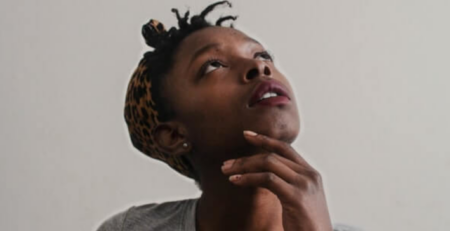Graphic Design Agencies: When and How to Choose the Right One for Your Business
In today’s highly competitive business landscape, effective graphic design has become an integral part of a successful marketing strategy. Whether you’re a small business owner or a large corporation, investing in high-quality graphic design can help you differentiate your brand, attract new customers, and retain existing ones. However, with so many graphic design agencies to choose from, selecting the right one can be a daunting task.
In this article, we’ll explore the key factors to consider when choosing a graphic design agency that aligns with your business needs. We’ll discuss the importance of conducting a thorough business analysis, identifying your goals and objectives, and determining your budget and timeline. We’ll also cover how to research potential agencies, evaluate their capabilities, and navigate the proposal and contract process.
Choosing the right graphic design agency is a critical decision that can impact the success of your business. By following the guidelines outlined in this article, you’ll be well-equipped to make an informed decision and establish a long-term working relationship with an agency that meets your needs and helps you achieve your goals.
- Understanding Your Business Needs
- Conducting a Business Analysis
- Identifying Your Goals and Objectives
- Determining Your Budget and Timeline
- Evaluating Your Existing Design Assets
- Researching Potential Agencies
- Asking for Referrals and Recommendations
- Conducting Online Research
- Reviewing Agency Portfolios and Case Studies
- Narrowing Down Your Options
- Evaluating the Agency’s Capabilities
- Examining the Agency’s Process
- Assessing Communication Skills
- Evaluating Technical Expertise
- Reviewing Client Testimonials and References
- Assessing Creativity and Innovation
- Understanding the Agency’s Culture and Values
- Navigating the Proposal and Contract Process
- Clarifying Project Scope
- Establishing a Budget
- Negotiating the Contract
- Establishing a Timeline
- Defining Deliverables
- Managing the Design Process and Relationship
- Establishing Communication Channels
- Providing Feedback
- Collaborating on Design Concepts
- Monitoring Progress
- Building a Strong Relationship

Understanding Your Business Needs
Before you start your search for a graphic design agency, it’s important to conduct a thorough analysis of your business needs. This will help you determine what you need from an agency and what you can realistically expect from them. Here are some key factors to consider:
Conducting a Business Analysis
Before you begin searching for a graphic design agency, it’s essential to conduct a comprehensive business analysis. This includes analyzing your brand, your target audience, your competition, and your marketing strategy. A thorough understanding of your business will help you identify your design needs and evaluate potential agencies.
Identifying Your Goals and Objectives
Once you have a clear understanding of your business, you need to identify your goals and objectives. What do you want to achieve through your graphic design? Do you want to increase brand awareness, generate more leads, or improve customer engagement? Clearly defining your goals and objectives will help you identify the right agency to partner with.
Determining Your Budget and Timeline
Before you start your search, it’s important to determine your budget and timeline. Graphic design agencies offer a range of pricing structures, from hourly rates to flat fees, so it’s important to understand what you can afford. Additionally, you need to have a clear idea of your project timeline, so you can choose an agency that can deliver on time.
Evaluating Your Existing Design Assets
If you have existing design assets, it’s important to evaluate their effectiveness and determine what changes need to be made. This includes analyzing your website, social media profiles, marketing materials, and any other design elements that are important to your business. By identifying areas that need improvement, you can better evaluate potential agencies.
In summary, understanding your business needs is a critical step in choosing the right graphic design agency. Conducting a comprehensive business analysis, identifying your goals and objectives, determining your budget and timeline, and evaluating your existing design assets will help you make an informed decision and choose an agency that aligns with your needs.
Researching Potential Agencies
Once you have a clear understanding of your business needs, it’s time to start researching potential graphic design agencies. There are several methods you can use to find potential agencies, including asking for referrals and recommendations, conducting online research, and reviewing agency portfolios and case studies.
Asking for Referrals and Recommendations
One of the best ways to find a reliable graphic design agency is by asking for referrals and recommendations from your business network. This could include colleagues, partners, or other business owners in your industry. Referrals and recommendations can help you find an agency that has a proven track record and a good reputation.
Conducting Online Research
Another way to find potential agencies is by conducting online research. You can use search engines, social media, and online directories to find agencies that match your needs. When conducting online research, it’s important to review the agency’s website, social media profiles, and online reviews to get a sense of their design style, expertise, and reputation.
Reviewing Agency Portfolios and Case Studies
Once you’ve identified potential agencies, it’s important to review their portfolios and case studies. A portfolio is a collection of an agency’s best design work, while case studies provide insight into how they approach and solve design problems for their clients. By reviewing an agency’s portfolio and case studies, you can get a sense of their design style, expertise, and creative approach.
When reviewing portfolios and case studies, it’s important to look for designs that are relevant to your industry and business needs. Additionally, pay attention to the quality and consistency of the designs, as well as the agency’s ability to deliver on time and within budget.
Narrowing Down Your Options
After conducting research and reviewing potential agencies, it’s time to narrow down your options. Start by creating a shortlist of agencies that best align with your business needs and design preferences. From there, you can schedule consultations or request proposals to help you make a final decision.
In summary, researching potential graphic design agencies is a critical step in choosing the right partner for your business. Asking for referrals and recommendations, conducting online research, and reviewing agency portfolios and case studies can help you identify agencies that align with your needs and preferences. By narrowing down your options, you can make an informed decision and choose an agency that is best suited to help you achieve your goals.
Evaluating the Agency’s Capabilities
Once you’ve narrowed down your options and identified a few potential graphic design agencies, it’s time to evaluate their capabilities. This involves looking beyond their portfolios and case studies and examining their processes, communication skills, and ability to deliver on your specific design needs. Here are some key factors to consider:
Examining the Agency’s Process
A reliable graphic design agency should have a clear and defined process for working with clients. This process should include an initial consultation, project scoping, design concepts, revisions, and final delivery. During your consultation, ask the agency to explain their process in detail and make sure it aligns with your needs and timeline.
Assessing Communication Skills
Clear communication is essential to a successful partnership with a graphic design agency. During your consultation, pay attention to how well the agency communicates and how responsive they are to your questions and concerns. Ask about their preferred communication methods, how often you can expect updates, and how they handle feedback and revisions.
Evaluating Technical Expertise
It’s important to evaluate an agency’s technical expertise to ensure they can deliver designs that meet your specific needs. This includes evaluating their software and hardware capabilities, their knowledge of design principles and techniques, and their ability to work with different file formats and design styles.
Reviewing Client Testimonials and References
One of the best ways to evaluate an agency’s capabilities is by reviewing client testimonials and references. This will give you an idea of the agency’s strengths and weaknesses, as well as their ability to deliver on specific design needs. When reviewing client testimonials and references, look for patterns in feedback and ask specific questions about the agency’s performance and communication skills.
Assessing Creativity and Innovation
A reliable graphic design agency should have a strong sense of creativity and innovation. This includes the ability to think outside the box and develop unique designs that align with your brand and business needs. During your consultation, ask the agency about their creative approach and how they generate design concepts.
Understanding the Agency’s Culture and Values
Finally, it’s important to understand the agency’s culture and values to ensure they align with your own. This includes evaluating their company mission, work environment, and approach to client relationships. By choosing an agency with values that align with your own, you can build a strong and lasting partnership.
In summary, evaluating a graphic design agency’s capabilities involves looking beyond their portfolios and case studies and examining their process, communication skills, technical expertise, client testimonials and references, creativity and innovation, and culture and values. By considering these factors, you can make an informed decision and choose an agency that is best suited to help you achieve your design goals.
Navigating the Proposal and Contract Process
Once you’ve selected a graphic design agency that meets your needs and budget, it’s time to navigate the proposal and contract process. This process involves clarifying project scope, timeline, budget, and deliverables, and establishing clear expectations for both parties. Here are some key factors to consider:
Clarifying Project Scope
Before moving forward with a graphic design agency, it’s essential to clarify project scope. This includes identifying the specific design needs, such as logo design, branding, packaging design, or web design, and outlining the specific deliverables and timeline. During this process, it’s important to be as specific as possible to avoid confusion and miscommunication down the line.
Establishing a Budget
Establishing a budget is a critical part of the proposal and contract process. This involves setting clear expectations for the cost of the project, including any potential revisions or additional services. When discussing the budget with the agency, it’s essential to be transparent about your financial constraints and to ask for a detailed breakdown of costs.
Negotiating the Contract
Once you’ve agreed on project scope and budget, it’s time to negotiate the contract. This includes outlining the specific terms of the agreement, such as payment schedule, intellectual property rights, confidentiality agreements, and liability clauses. It’s essential to review the contract carefully and ask any questions before signing.
Establishing a Timeline
Establishing a timeline is another critical part of the proposal and contract process. This includes identifying specific milestones and deadlines for the project, such as initial design concepts, revisions, and final delivery. When establishing the timeline, it’s essential to be realistic about the time required for each stage of the project and to build in extra time for potential revisions or delays.
Defining Deliverables
Finally, it’s important to define the specific deliverables of the project. This includes outlining the specific design concepts, file formats, and any other deliverables that are required. It’s essential to be clear about your expectations for the final deliverables and to ask for any necessary revisions before finalizing the project.
In summary, navigating the proposal and contract process involves clarifying project scope, establishing a budget, negotiating the contract, establishing a timeline, and defining deliverables. By following these steps, you can establish clear expectations and build a strong partnership with your graphic design agency.
Managing the Design Process and Relationship
Once you’ve selected a graphic design agency and established a contract, it’s time to manage the design process and relationship. This involves communication, feedback, and collaboration to ensure that the project is completed on time and within budget. Here are some key factors to consider:
Establishing Communication Channels
Effective communication is essential for managing the design process and relationship. This involves establishing clear communication channels, such as email, phone, or project management software, and setting expectations for response times and availability. It’s important to maintain open communication throughout the project and to address any concerns or issues as they arise.
Providing Feedback
Providing feedback is another critical part of managing the design process. This includes offering constructive feedback on initial design concepts, providing clear direction on revisions, and ensuring that the final deliverables meet your expectations. When providing feedback, it’s important to be specific and concise, and to offer suggestions for improvement.
Collaborating on Design Concepts
Collaboration is key to a successful design project. This involves working closely with the graphic design agency to refine initial design concepts, and to ensure that the final deliverables reflect your brand and meet your design needs. When collaborating on design concepts, it’s important to be open to new ideas and to consider the agency’s expertise and experience.
Monitoring Progress
Monitoring progress is essential for managing the design process and ensuring that the project stays on track. This includes reviewing design concepts and revisions, tracking milestones and deadlines, and addressing any issues or concerns as they arise. By monitoring progress, you can stay informed and make informed decisions about the project.
Building a Strong Relationship
Finally, building a strong relationship with your graphic design agency is critical for future projects and continued success. This involves being respectful and professional, providing timely feedback and communication, and establishing a strong rapport with the agency’s team members. By building a strong relationship, you can establish trust and mutual respect, and work together to achieve your design goals.
In summary, managing the design process and relationship involves establishing communication channels, providing feedback, collaborating on design concepts, monitoring progress, and building a strong relationship. By following these steps, you can ensure that your project is completed on time and within budget, and build a strong partnership with your graphic design agency.
Conclusion
Navigating the world of graphic design agencies can be overwhelming, but with the right approach, you can find the perfect partner for your business’s design needs. By following the steps outlined in this article, you can evaluate potential agencies, navigate the proposal and contract process, and manage the design process and relationship to ensure a successful outcome.
Remember, choosing the right graphic design agency involves more than just evaluating their design portfolio. You should also consider their capabilities, experience, communication skills, and overall fit with your business. By taking the time to evaluate potential agencies and establish a strong partnership, you can achieve your design goals and set your business up for continued success.
When evaluating potential agencies, be sure to ask the right questions and conduct thorough research. This includes reviewing their portfolio, reading reviews and testimonials, and reaching out to past clients. It’s also important to establish clear expectations and communication channels from the outset, and to monitor progress and provide feedback throughout the design process.
Once you’ve chosen a graphic design agency, the contract and proposal process can be overwhelming. But by understanding the key terms and negotiating the right contract, you can ensure that your project stays on budget and meets your expectations. Remember to establish clear timelines and deliverables, and to address any concerns or issues as they arise.
Finally, managing the design process and relationship is critical for ensuring a successful outcome. This involves effective communication, collaboration, and feedback, as well as monitoring progress and building a strong relationship with your agency’s team members.
In conclusion, finding the right graphic design agency can be a game-changer for your business’s branding and marketing efforts. By following the steps outlined in this article and taking the time to evaluate potential agencies, navigate the proposal and contract process, and manage the design process and relationship, you can find a partner that understands your business’s unique needs and helps you achieve your design goals.











